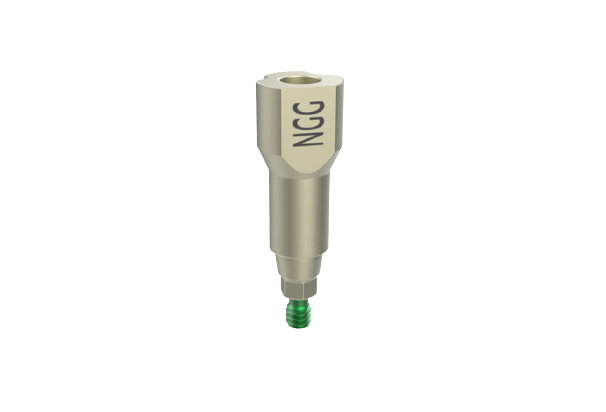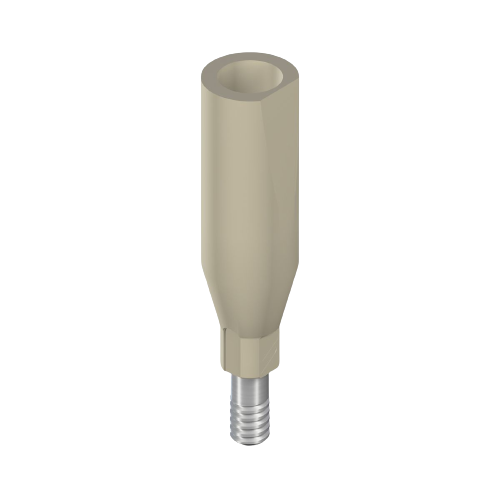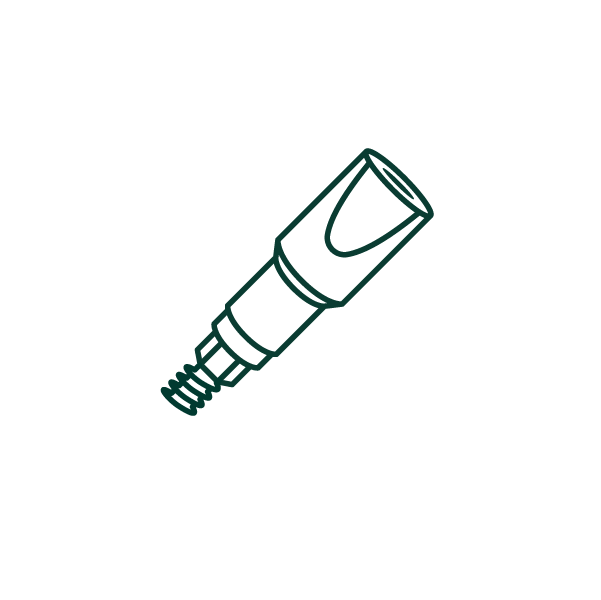Implant scan bodies
Scan bodies are the digital equivalent of an analog transfer coping. Dandy provides free scan bodies for all FDA-approved implant systems. Our scan bodies are titanium, autoclavable, and reusable up to 100 times.

Take some time to learn more about taking your practice digital with the nations first and only digital dental lab.
Dandy’s implant scan body offering
How do scan bodies work?
Scan bodies communicate the positioning of your patient’s implant(s) using 3D data points that the lab utilizes during the digital design process.
This position and angle is triangulated during the scanning process.
Just like impression copings, scan bodies come in different sizes and are unique to implant manufacturers.

Sterilization and usage of implant scan bodies
The majority of scan bodies that we send to our practices can be reused multiple times.
However, some (non-titanium) scan bodies are one-use only. Straumann scan bodies fall in this category,
Prior to use, the cleaned scan bodies and associated screwdriver must be autoclaved at 121° c for 15 minutes, or at 134°c for 3 minutes.

How can I verify proper scan body seating?
An X-ray is the best way to confirm the scan body is properly seated.
Some causes for scan bodies not being seated properly are:
If this is the case, replace the healing cap until the tissue responds.
If this is the case, check contacts and reduce scan body if necessary.
If this is the case, the scan body screw should drive passively. If you feel any resistance, unscrew the scan body, change the angulation, and replace it correctly.
Implant scan body FAQ
Dandy dental partners with access to our Portal can order scan bodies from the “supplies” tab.
It is required that you order your scan body a week in advance of your scanning appointment. We will have it shipped to your practice.
Because no PVS material is used in the digital workflow, dentists often think of scan bodies as the “digital” version of the impression coping.
Aside from compatibility, scan bodies are differentiated by their shape/geometry. Scan body architecture can be thought of as two component parts: a cylinder and top cap. Scan bodies generally have a unique top cap geometry, which can be used to help identify them.
A scan body is a uniquely-shaped piece of titanium that helps convey the location, angle, and depth of the implant, to our digital model of the patient’s mouth. After the surgeon has placed an implant in a patient’s mouth, and it has healed, the restoring doctor will place a scan body on the implant and scan the area. Scan bodies are also sometimes called scan abutments, scan posts, or scan flags.
Without knowing where the implant is, it would be impossible to design an abutment or crown that will appropriately fit in the patient’s mouth. The scan body also dictates where a custom abutment (and therefore the implant order) can be sent for manufacturing. It determines the DMEs designers and labs are able to use. DMEs are sourced from the manufacturers of implant systems and also indicate to the manufacturers how to mill the abutment.
Scan bodies have many compatibility requirements. Scan bodies will be screwed into the implant, so they need to be compatible with the implant system’s width and connection type. They also need to be compatible with the type of abutment being manufactured. Choosing the correct scan body is imperative to ensuring the abutment can actually be milled and attached to the implant.
- When an authentic scan body is used, the abutment designed must be sent to the respective implant company for them to mill the abutment (e.g., a scan body purchased from Straumann was used to scan a Straumann implant must be sent to the Straumann milling center).
- Companies that do not manufacture implants may sell generic, or third party, scan bodies; they partner with different implant companies to produce scan bodies that can be used to create custom abutments. Examples of third party companies include Dess and Core3D.
- 3Shape scan bodies are an anomaly – they are not from an implant company nor a generic company. Some implant companies allow cases scanned with 3Shape scan bodies to use their authentic digital workflow or components; this means 3Shape scan bodies can be used to manufacture authentic custom abutments in some cases.
The scan body <> manufacturer relationship is complex and governed by the FDA, further complicated by expired patents which allow manufacturers to clone/rename another manufacturer’s implant system.
Aside from compatibility, scan bodies are differentiated by their shape and geometry. Scan body architecture can be thought of as two component parts: a cylinder and top cap. Scan bodies generally have a unique top cap geometry, which can be used to help identify them.
Conical is a type of connection that many implants use. You’ll see a lot of connections named conical connections, but they’re actually very different. The only similarity is the cone shape to engage into an implant.
‘Narrow Platform’, ‘Regular Platform’, ‘Wide Platform’; These are terms used by manufacturers to describe platform diameter sizes; the scan body size must correspond to the implant system platform size in order for the scan body to be properly seated when the doctor is scanning the mouth.
Ready to use Dandy as your new lab for implant restorations and scan bodies?
Talk to our team about your practice getting started with Dandy. We’ll answer your questions and tell you about our digital dental services.
Take some time to learn more about taking your practice digital with the nations first and only digital dental lab.